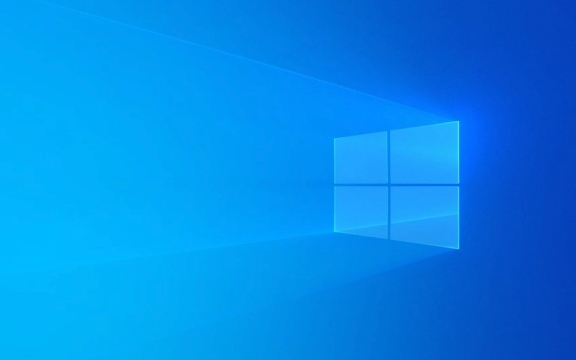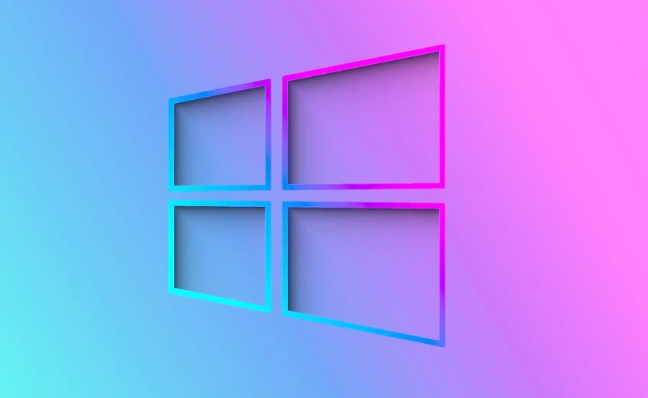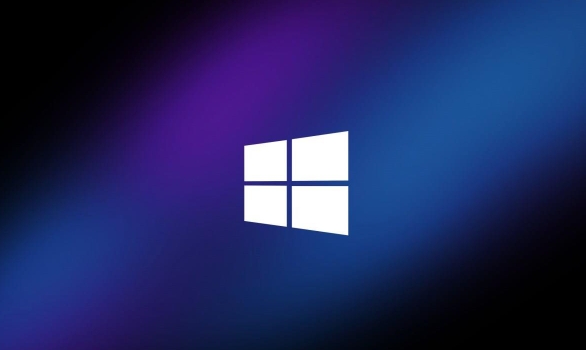如何在Windows安裝期間對分區錯誤進行故障排除
First, check disk connections and ensure the drive is detected in BIOS/UEFI. 2. Confirm partition style matches boot mode: use GPT for UEFI and MBR for Legacy BIOS, converting if necessary via diskpart after backing up data. 3. Delete all existing partitions in the installer or use diskpart clean to remove hidden partitions and create unallocated space. 4. Use properly created installation media with FAT32-formatted USB, preferably via Microsoft’s Media Creation Tool, and test different USB ports while disabling Fast Boot and Secure Boot temporarily. 5. Check for disk errors using diskpart, bring offline disks online, and verify hardware compatibility, especially for drives over 2TB or newer NVMe SSDs. 6. Update BIOS/UEFI firmware to the latest version from the manufacturer to ensure full drive support and resolve recognition issues. Following these steps systematically resolves most Windows installation partition errors completely.

Partition errors during Windows installation can be frustrating, especially when you're trying to set up a new system or reinstall the OS. These errors often stem from disk configuration issues, incompatible partition styles, or corrupted installation media. Here’s how to troubleshoot and resolve them effectively.

1. Check Disk Connection and Hardware
Before diving into software fixes, ensure the storage drive is properly connected and recognized by the system.
- For desktops: Make sure SATA or NVMe cables are securely connected.
- For laptops: If possible, verify the SSD/HDD is seated correctly.
- In BIOS/UEFI: Enter setup (usually by pressing F2, Del, or F12 during boot) and confirm the drive appears in the list.
- If the drive isn’t detected, try a different SATA port, cable, or test the drive on another system.
If the drive still isn’t recognized, it may be failing or incompatible.

2. Verify Partition Style: MBR vs. GPT
One of the most common causes of partition errors is a mismatch between the disk’s partition style and the system’s boot mode.
- UEFI systems require GPT partitioned disks.
- Legacy BIOS systems typically use MBR.
How to fix:

- During Windows installation, press Shift + F10 to open Command Prompt.
- Run:
diskpart list disk
- Look for the GPT column. A * indicates the disk uses GPT.
- If you're installing in UEFI mode but the disk is MBR, you’ll need to convert it to GPT (this erases all data):
select disk X (replace X with your disk number) clean convert gpt exit
- Then close the Command Prompt and refresh the installer — the partition error should now be resolved.
⚠️ Note: Back up data before using
clean— it wipes the entire disk.
3. Delete and Recreate Partitions
Sometimes, existing partitions (especially hidden ones like recovery or EFI partitions) interfere with installation.
- In the Windows installer, when you reach the “Where do you want to install Windows?” screen:
- Select each partition and click Delete.
- Repeat until all partitions on the target disk are gone, leaving only "Unallocated Space."
- Click Next — Windows will automatically create the necessary partitions (system, recovery, EFI if needed).
If the installer still won’t proceed, return to diskpart via Shift + F10 and use clean to wipe the disk completely.
4. Ensure Installation Media and USB Settings Are Correct
Faulty or improperly created installation media can cause partition-related errors.
- Use the official Media Creation Tool from Microsoft to create a USB installer.
- Format the USB as FAT32 and ensure it’s written correctly.
- Try a different USB port — preferably USB 2.0 instead of 3.0, as some systems have compatibility issues.
- In BIOS, disable Fast Boot and Secure Boot temporarily to test if they’re blocking proper disk access.
Also, make sure the USB drive isn’t corrupted — test it on another PC or recreate it.
5. Check for Disk Errors and Compatibility
Even new drives can have issues.
Use diskpart to check for errors:
select disk X attributes disk
Look for any read-only or offline attributes. If the disk is offline:
online disk
Run:
clean
To remove all partitions and prepare for a fresh install.
For older systems or certain SSDs, check if the drive is compatible with the motherboard (e.g., some older BIOS versions don’t support drives over 2TB).
6. Update BIOS/UEFI Firmware
An outdated motherboard firmware can cause disk recognition and partitioning problems, especially with newer NVMe drives or large SSDs.
- Visit your motherboard or laptop manufacturer’s website.
- Download and install the latest BIOS update.
- After updating, retry the Windows installation.
Bottom line: Most partition errors during Windows setup come down to boot mode (UEFI vs. Legacy), partition style (GPT vs. MBR), or leftover partitions blocking installation. Using diskpart to clean the drive and ensuring correct firmware and media settings resolves the vast majority of cases.
Basically, it’s not complicated — just methodical.
以上是如何在Windows安裝期間對分區錯誤進行故障排除的詳細內容。更多資訊請關注PHP中文網其他相關文章!

熱AI工具

Undress AI Tool
免費脫衣圖片

Undresser.AI Undress
人工智慧驅動的應用程序,用於創建逼真的裸體照片

AI Clothes Remover
用於從照片中去除衣服的線上人工智慧工具。

Clothoff.io
AI脫衣器

Video Face Swap
使用我們完全免費的人工智慧換臉工具,輕鬆在任何影片中換臉!

熱門文章

熱工具

記事本++7.3.1
好用且免費的程式碼編輯器

SublimeText3漢化版
中文版,非常好用

禪工作室 13.0.1
強大的PHP整合開發環境

Dreamweaver CS6
視覺化網頁開發工具

SublimeText3 Mac版
神級程式碼編輯軟體(SublimeText3)
 如何在MACOS更新之前備份Mac?
Jul 15, 2025 am 12:33 AM
如何在MACOS更新之前備份Mac?
Jul 15, 2025 am 12:33 AM
更新macOS前應備份Mac,1.使用TimeMachine做完整備份,插入外接硬盤並開啟自動定期備份;2.手動備份重要文件到雲存儲或外部設備,優先備份文檔、照片、書籤等關鍵資料;3.創建可啟動的macOS安裝盤用於系統修復或重裝,準備16GBU盤並運行終端命令創建。備份能有效防止更新失敗或數據丟失,提前準備更安心。
 如何在第二個監視器設置上安裝窗口
Jul 17, 2025 am 02:42 AM
如何在第二個監視器設置上安裝窗口
Jul 17, 2025 am 02:42 AM
安裝Windows系統時連接第二塊顯示器不會影響安裝流程,但需注意以下事項以確保雙屏正常工作:1.安裝過程中可能僅一個屏幕顯示,可調整BIOS中的主顯示設備或更換接口解決;2.安裝完成後通過Win P選擇顯示模式,並在顯示設置中調整分辨率、位置和主顯示器;3.若出現黑屏或無法識別的情況,檢查線材、更新驅動或進入安全模式重裝驅動;4.使用不同分辨率顯示器時,分別設置合適的縮放比例並啟用縮放修復選項以優化顯示效果。
 如何刪除下載的MacOS更新文件以釋放空間?
Jul 20, 2025 am 02:04 AM
如何刪除下載的MacOS更新文件以釋放空間?
Jul 20, 2025 am 02:04 AM
要清理macOS更新文件,可手動刪除/Library/Updates和/var/folders中的更新包,或使用終端命令sudorm-rf/Library/Updates/*刪除,也可藉助CleanMyMacX、DaisyDisk等工具清理系統緩存;但需注意刪除前確認更新已完成並保留必要文件以備回滾。
 如何在戴爾筆記本電腦上安裝macOS?
Jul 21, 2025 am 01:31 AM
如何在戴爾筆記本電腦上安裝macOS?
Jul 21, 2025 am 01:31 AM
安裝macOS到Dell筆記本可行但需動手能力,1.準備支持的Dell筆記本、U盤、macOS環境及EFI文件;2.用OpenCore或UniBeast製作啟動盤並調整BIOS設置;3.安裝系統時處理驅動問題如顯卡、網卡等;4.使用配置工具優化EFI修復電源管理;5.日常維護注意系統更新兼容性並藉助社區解決問題。
 Jul 27, 2025 am 02:41 AM
Jul 27, 2025 am 02:41 AM
安裝macOS到VMwareFusion虛擬機需準備工具和正確步驟。 1.準備好macOS電腦、VMwareFusion(推薦Pro版)、合法macOS安裝鏡像及Unlocker工具;2.創建虛擬機時選擇正確係統類型並合理分配磁盤、內存和CPU;3.如無法啟動,使用Unlocker打補丁以支持macOS;4.安裝過程中如遇黑屏、格式化問題或網絡故障,可分別通過調整顯示器設置、格式化磁盤和配置網絡模式解決;5.安裝完成後及時安裝VMwareTools並優化設置,包括共享文件夾、固定分辨率和系統更新。
 如何解決' Windows找不到Microsoft軟件許可條款”
Jul 27, 2025 am 03:28 AM
如何解決' Windows找不到Microsoft軟件許可條款”
Jul 27, 2025 am 03:28 AM
出現“WindowscannotfindtheMicrosoftSoftwareLicenseTerms”提示時,主要原因是系統無法找到許可協議文件,解決方法如下:1.檢查安裝介質是否完整,使用官方工具重新製作啟動U盤並驗證ISO哈希值;2.手動添加許可協議文件,從正常運行的Windows電腦復制license.rtf至安裝介質並確保版本匹配;3.更改BIOS設置,嘗試切換啟動模式或關閉SecureBoot功能;4.避免使用第三方精簡版系統,推薦使用微軟官網提供的標準ISO鏡像以避免組件缺失問題
 自定義Windows安裝選項的指南
Aug 01, 2025 am 04:48 AM
自定義Windows安裝選項的指南
Aug 01, 2025 am 04:48 AM
選擇“ custom:stermintwindowsonly(高級)” forfullcontrol,asitallowsacleanInstallthatRemovesoldissOldissuesuseSuseSuseSuseSuseSuseSuseSperizesPerformance.2.duringSetup,ManagePartitionSbyDeletingOldingOndones(後面的backingupdata),創建NeweWpartitions,freenneNewPartitions,Formatitions,Formatting(Formatting)(formatting(formatting)(forntfs)(使用nttfs)
 MACOS安裝指南的OpenCore Legacy Patcher
Jul 19, 2025 am 01:26 AM
MACOS安裝指南的OpenCore Legacy Patcher
Jul 19, 2025 am 01:26 AM
若設備不在蘋果官方支持列表中,可通過OpenCoreLegacyPatcher(OCLP)在老舊Mac上安裝macOS。具體步驟如下:1.確認設備兼容性,如2012年前後的MacBookPro、iMac或Macmini,並檢查主板芯片組是否支持EFI模式;2.準備16GB或更大的U盤並製作macOS安裝U盤,使用官方命令或第三方工具寫入鏡像;3.下載並運行OCLP,選擇目標設備進行補丁處理,自動解決內核擴展和驅動兼容問題,必要時手動調整補丁選項;4.插入打完補丁的U盤,重啟時按Option鍵進入







